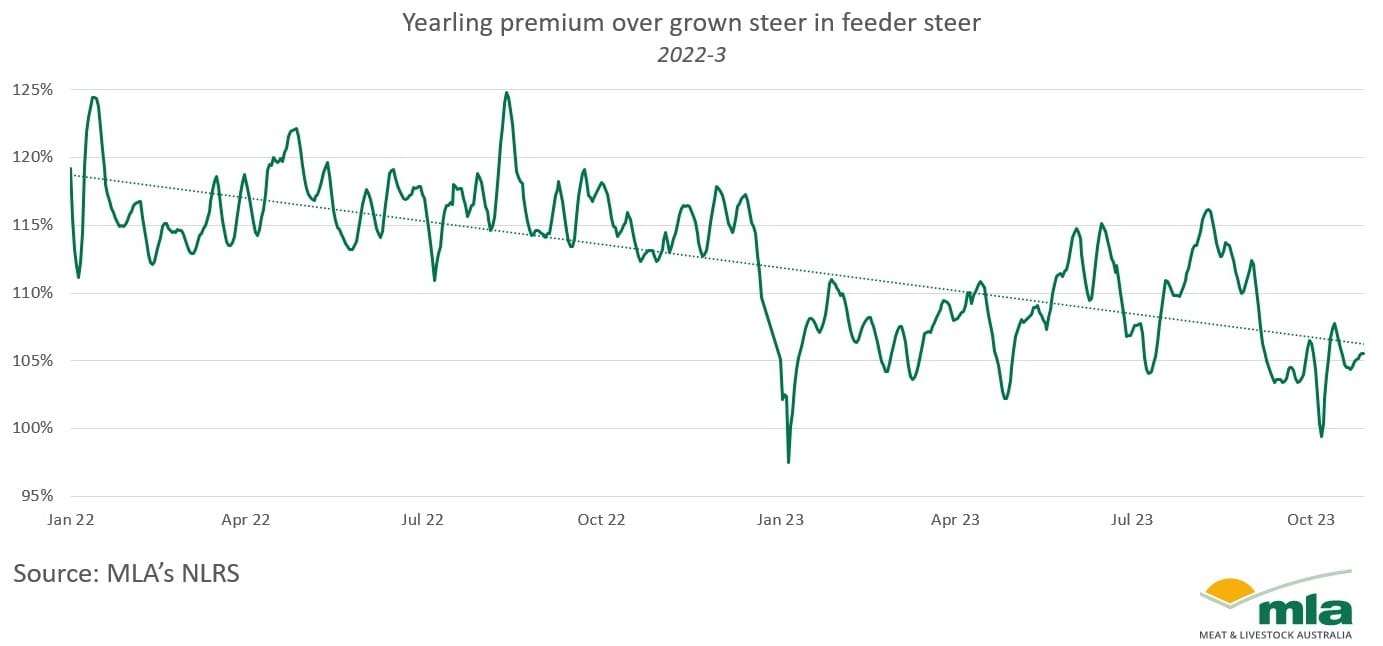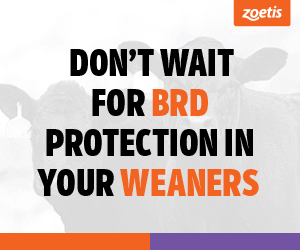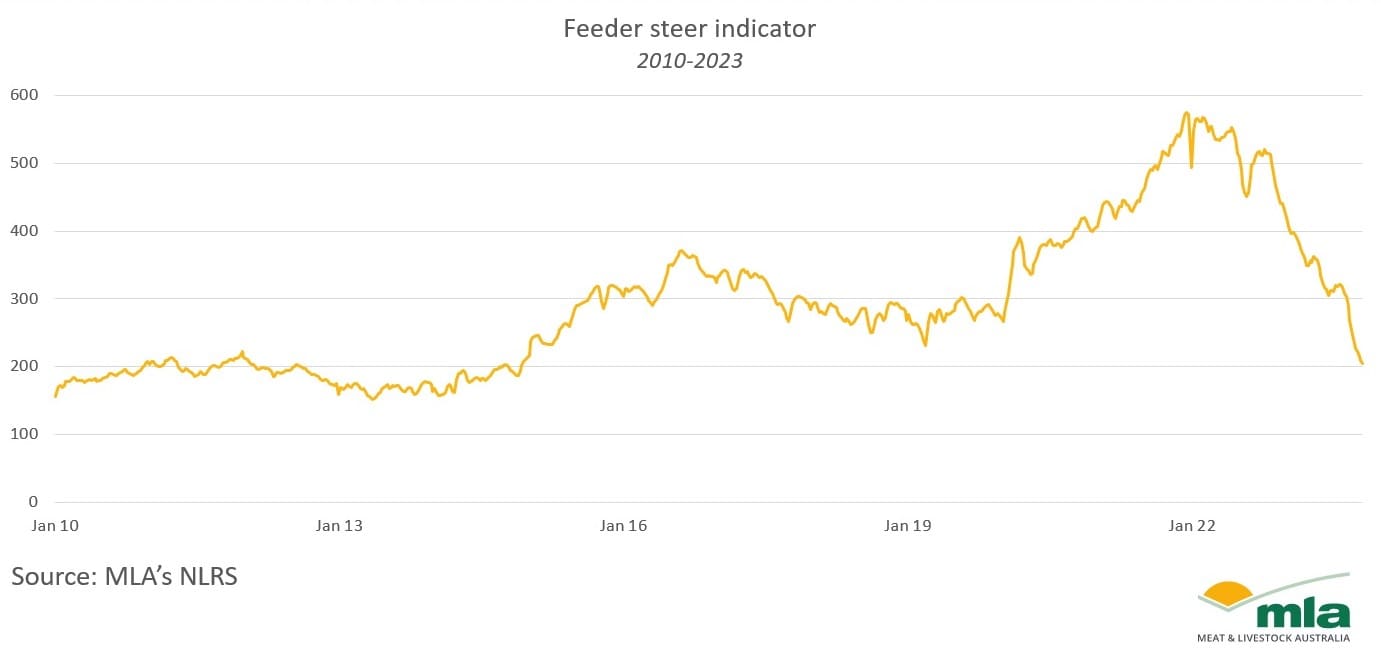SALEYARDS feeder steer prices are in danger of falling below 200c/kg for the first time since late 2014, as young cattle values across eastern Australia continue to come under considerable pressure.
The National Livestock Reporting Service’s feeder steer indicator (see Beef Central home page industry dashboard graphs) yesterday finished at 203.95c/kg.
That’s down another 19c/kg over the past month and 314c/kg lower than this time last year, when feeder steers contributing to the NLRS indicator were making 518c – a decline of 61pc since then. As can be seen on this graph, yesterday’s feeder indicator price was the lowest seen since mid-December, 2014.
To add context, feeders sold via saleyards throughout 2022 ranged from 571c/kg in February, through to 438c/kg by year’s end.
Individual sales contributing to the NLRS data over the past seven days had feeders averaging as low as 155c/kg (Scone) and has high as 247c (Mt Barker) and 223c/kg (Inverell).
The NLRS feeder steer indicator is based on steers 0-2 teeth up to 600kg liveweight, purchased by feedlot buyers only.
The combination of drought, abundant cattle supply, moderate international grainfed beef demand due to economic conditions, international cold storage stockpiles, high feed commodity prices and continued, surprisingly high US beef production has weighed heavily on feeder prices this year.

Paddock sales
Paddock sales of heavy flatback feeder steers in southern Queensland were quoted yesterday at 210c/kg, marginally higher than the saleyard result. Angus feeders were 10c higher, at 220c.
Note that not all paddock feeders negotiated inevitably get the highest quoted price. Some may be discounted on teeth, breed content, weight and other factors through to the impact of co-mingling in the yards. But the good operators inevitably get the top cell, given how liberal most feeder specifications are.
Also note that some lines may in fact attract a small premium over the top cell price, based on prior performance, numbers etc.
 Further south, the feeder market appears a little more variable. Good Angus heavy feeder types out of the paddock were quoted this morning at 225-235c, with better British-based flatbacks with ‘a bit of style’ around 210c. Flatback steers ‘lacking that bit of style’, perhaps with a little more indicus influence, are quickly back in the 190s in today’s market, but interest was very limited, Beef Central was told.
Further south, the feeder market appears a little more variable. Good Angus heavy feeder types out of the paddock were quoted this morning at 225-235c, with better British-based flatbacks with ‘a bit of style’ around 210c. Flatback steers ‘lacking that bit of style’, perhaps with a little more indicus influence, are quickly back in the 190s in today’s market, but interest was very limited, Beef Central was told.
“It’s turned around dramatically from last year when those indicus crossbreds were widespread across those yards from Tamworth south, in the right feedlot. Today, those yards are buying their Angus at the right money – they will still handle those Hereford and Shorthorn types in the right feedlots – but those indicus content cattle have virtually gone,” one contact said.
Saleyards purchases inevitably lag behind direct paddock consignment in a falling market like this. The price difference reflects the risk of greater variability in saleyards cattle.
For a lotfeeder putting together three decks of feeders out of the saleyards system, the cattle might come from 10-15 different vendors, with a range of weights, body condition, genetics, animal health performance and other factors.
So while saleyards cattle may on face value look cheaper in the current market cycle, lotfeeders inevitably face potential variability that costs them money in the feedyard, Beef Central was told.

